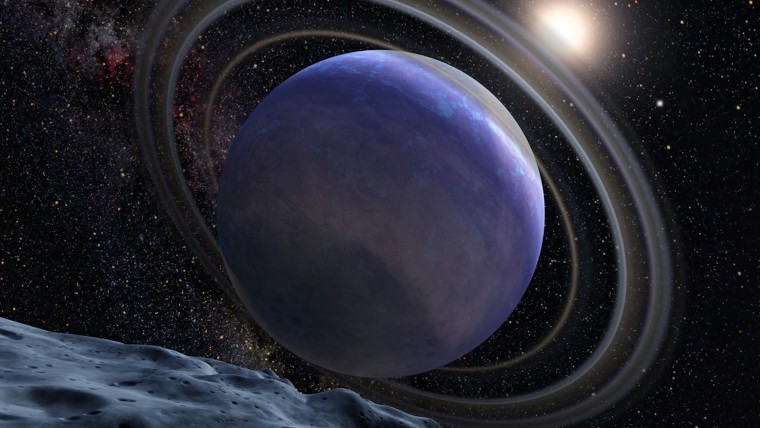When a burst of gravitational waves was detected in the constellation Orion last month, several astronomers around the world thought their wish had come true.
For several weeks, they had been watching Betelgeuse, one of the brightest stars in the sky, on the chance it would explode in a phenomenon known as a supernova.
“As soon as I got this alert of a burst, I did walk outside to see if Betelgeuse was still there,” said Andy Howell, an astronomer who studies supernovas at the Las Cumbres Observatory and the University of California at Santa Barbara.
Betelgeuse was still there. The burst of gravitational waves turned out to be a coincidence. But the star has created a sense of suspense in the astronomy world, which is hoping to someday observe a nearby supernova in real time.
The star, which forms the eastern “shoulder” of Orion, was first observed in December to be dimming. Astronomers are now closely watching the star to see if it’s about to return to its normal brightness – or if it will grow fainter.
“There does not seem to be any sign of the dimming stopping,” said Richard Wasatonic, an astronomer at Villanova University in Pennsylvania, who was one of the first to notice the change in the star.
“We are keeping a good eye on it,” Villanova astronomy professor Edward Guinan said.
Let our news meet your inbox. The news and stories that matters, delivered weekday mornings.
Guinan and Wasatonic have observed Betelgeuse (whose pronunciation is the subject of some debate in the Astronomy community) for more than 40 years. It’s classed as a “semiregular variable” star, and its patterns of dimming and then brightening again are well-known to astronomers. Wasatonic and Guinan’s report last year that the giant star was now fainter than they’d ever seen before sparked headlines suggesting Betelgeuse was about to explode. Then, late last month, Guinan and Wasatonic reported that Betelgeuse has continued to dim, so that it’s down to a third of its usual brightness, producing a very visible change in the constellation Orion.
All the astronomers NBC News spoke to for this story admitted hoping that Betelgeuse would soon go supernova so they could witness such a spectacular phenomenon for themselves.
Most supernovas are detected in distant galaxies. The incredibly violent explosion, which occurs when a giant star has finally run out of the fuel that fires its fusion reaction, briefly outshines all the rest of the stars in that galaxy put together. No one has ever seen a supernova nearby, and astronomers would be able to gain a tremendous amount of knowledge by closely observing the explosion and how it evolves over hours, days and years.
Whenever Betelgeuse does blow up, its supernova will be like nothing else seen in our skies for thousands of years – a star-like blast that could be brighter than the moon.
Although it’s about 700 light-years away – far enough to keep us safe from its radiation – Betelgeuse is relatively nearby in astronomical terms. It’s also about 700 times the size of our sun, with a radius roughly equivalent to the orbit of Jupiter.
“It would be astounding,” Howell said. “No person alive today will have seen anything so glorious as what will happen when Betelgeuse blows up.”
“You could see it in the daytime, it would cast shadows at night, everyone in the world who could see Orion would be able to see it,” he said. “It would transform people’s fascination with the night sky.”
But the connection between the dimming of a star and its eventual explosion is tenuous at best.
Astronomer Stella Kafka, the director of the American Association of Variable Star Observers, based in Cambridge, Massachusetts, said there is no theory to connect the dimming of a star with its supernova, and no other supernovas are known to have been preceded by similar dimming.
There is no doubt that Betelgeuse will explode as a supernova someday. It’s a red supergiant star near the end of its 10 million-year life cycle. But astronomers can’t say if that will happen tomorrow, or maybe in 100,000 years.
“It is inevitable,” Guinan said. “The star is going to blow up. It has no other choice in physics. I just don’t think it is now. But I’m becoming less and less certain of that.”
They suspect the dimming is caused by the growth of dark regions on the star’s surface – a bit like the sunspots on our own sun, but much larger.
The dark regions on Betelgeuse grow and shrink periodically, and the current dimming may be related to that, Guinan said.
And although there are signs that the dimming may be slowing, it could be that Betelgeuse doesn’t get brighter as expected – and that increases the chances, however slim, that it will explode as a supernova.
“I think it is a low probability,” he said. “But it could.”












